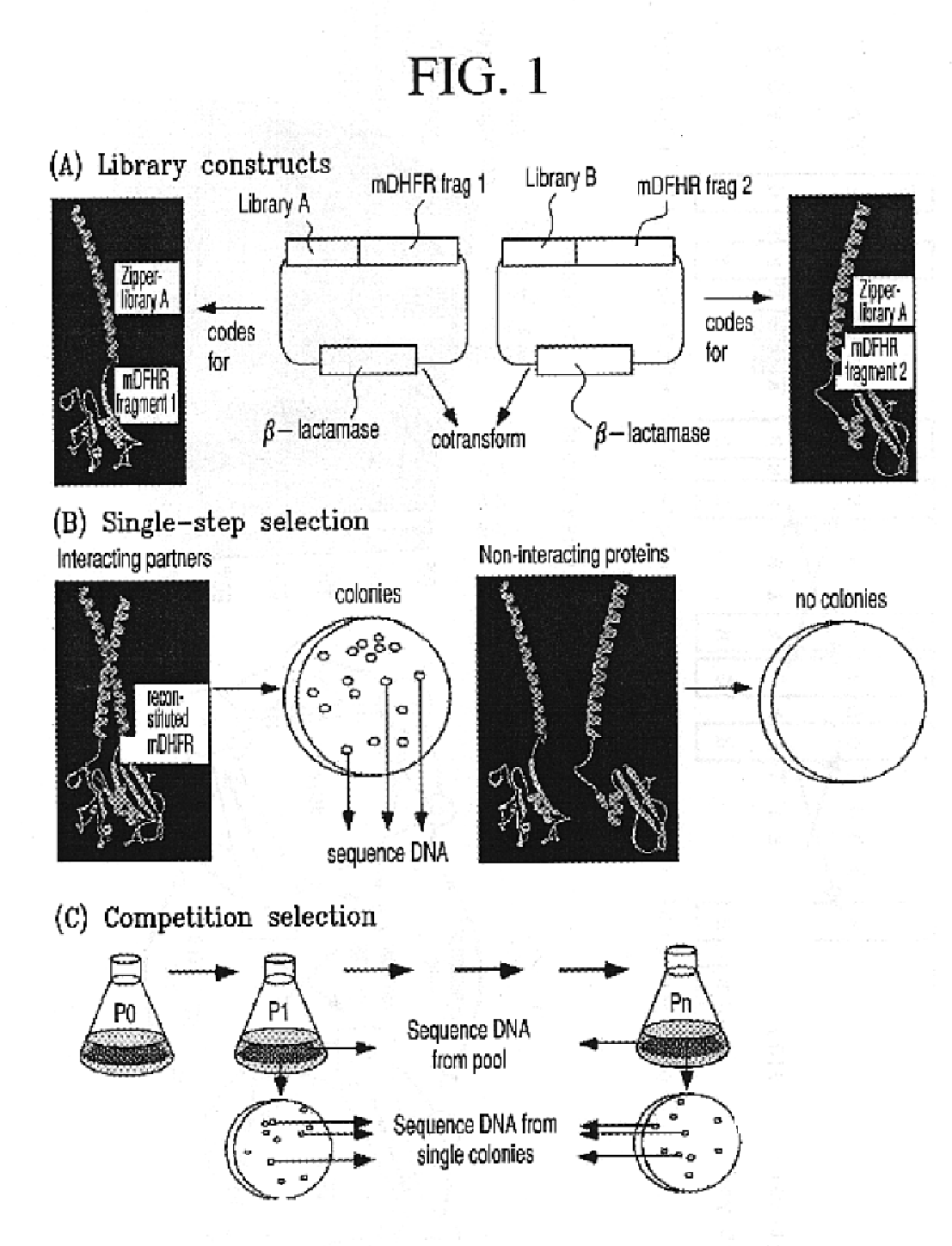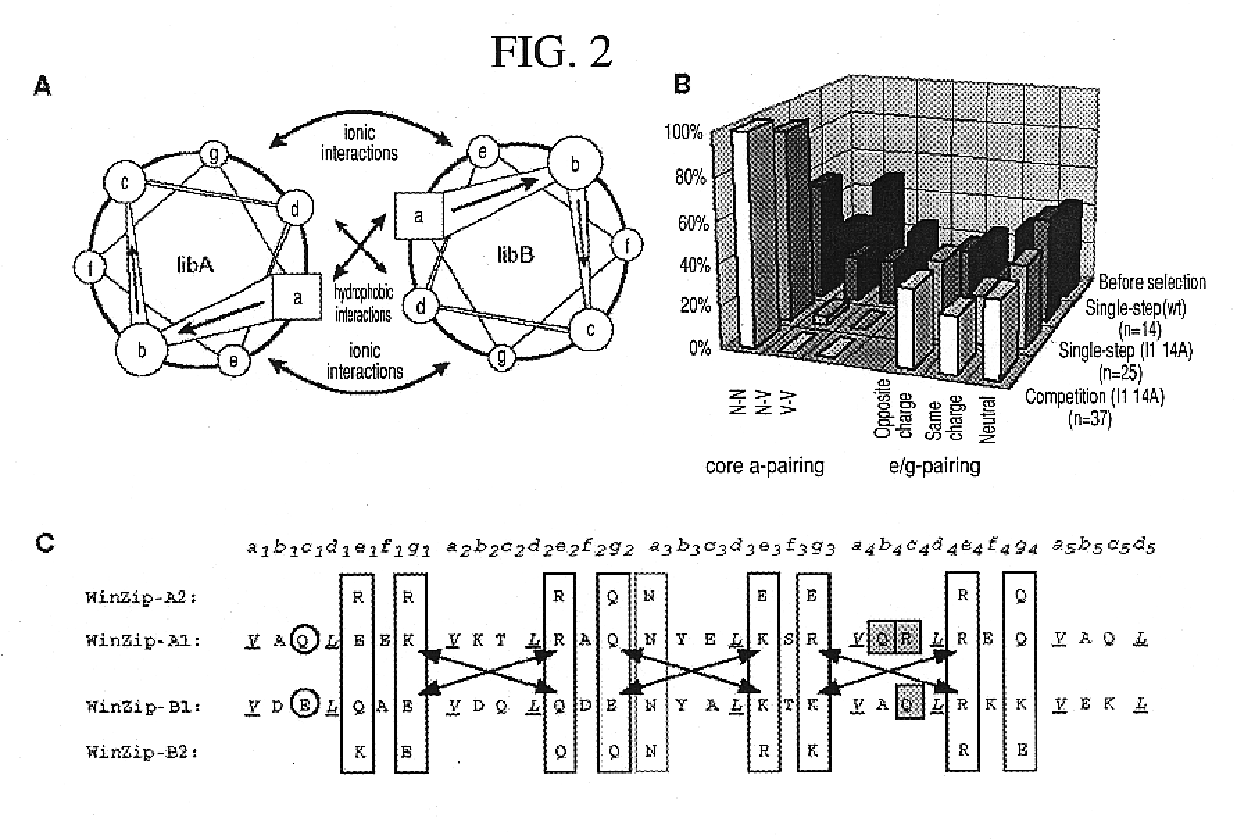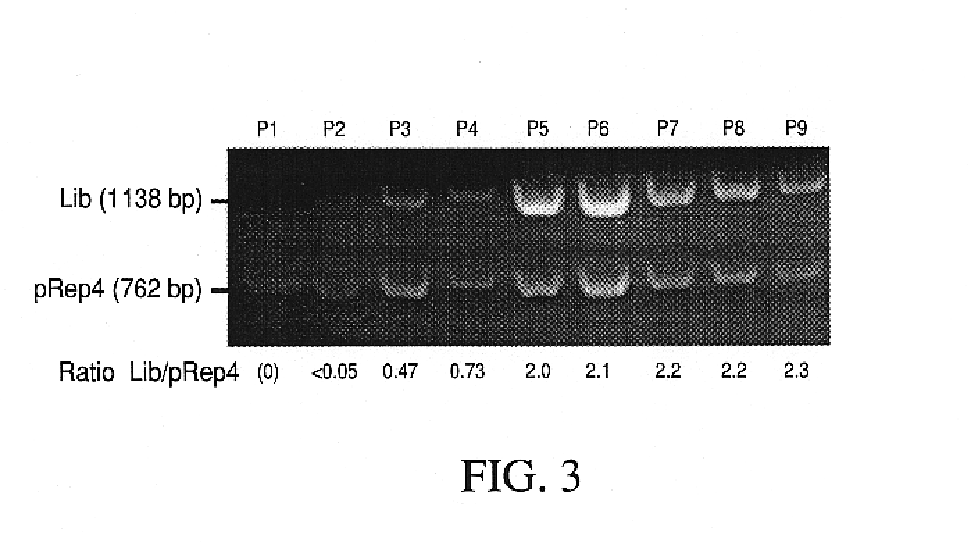Vivo library-versus-library selection of optimized protein-protein interactions
a protein-protein interaction and library-versus-library technology, applied in the field of molecular biology and biochemistry, can solve the problems of not being able to predict the sequence of coiled coil-forming peptides, and not being able to large-scale library-vs-library selection of protein-protein interactions
- Summary
- Abstract
- Description
- Claims
- Application Information
AI Technical Summary
Problems solved by technology
Method used
Image
Examples
example 1
[0038]Constructs for DHFR fragment complementation: The DNA constructs encoding the N-terminal (1-107) and C-terminal (108-186) mDHFR fragments have been previously described5. Briefly, each fragment was amplified by PCR with appropriate unique flanking restriction sites and subcloned into a bacterial expression vector (pQE-32 from Qiagen). Each plasmid encodes an N-terminal hexahistidine tag, followed by a designed flexible linker and the appropriate DHFR fragment. Unique restriction sites between the hexahistidine tag and the flexible linker allow subcloning of the desired library. After subcloning, the resulting linker between either library and DHFR fragment was: A(SGTS)2STSSGI for LibA and SEA(SGTS)2STS for LibB. The design of the semi-randomized libraries is illustrated in FIG. 2 and will be described in detail elsewhere (K. M. Arndt et al., submitted). Both libraries were produced using triplet-encoding oligonucleotides14 and amplified by PCR, using primers carrying the appro...
example 2
[0039]Selection: Selective pressure for DHFR was maintained throughout all steps by inhibiting the bacterial DHFR with trimethoprim (1 μg / ml) in minimal medium. Ampicillin and kanamycin (100 μg / ml and 50 μg / ml, respectively) were also included in all steps to retain the library plasmids and the lacl9 repressor-encoding plasmid (pRep4), respectively. Expression of the proteins was induced with 1 mM IPTG. When selecting on solid medium, growth was allowed for 45 hrs at 37° C. When selecting in liquid medium, the starting O.D. (600 nm) was either 0.0005 or 0.0001. Cells were propagated either in Erlenmeyer flasks or in a 10 liter New Brunswick fermentor, depending on the volume required to ensure adequate representation of all clones present, at 37° C. with shaking, or stirring at 250 RPM. After 10 to 24 hrs, O.D. (600 nm) reached 0.2 to 1.0 and cells were harvested. In competition selections, liquid culture was directly used to inoculate the next passage. We used BL21 cells with a tra...
example 3
[0040]Competition selection: When it was necessary to control precisely the starting number of cells in a competition, the number of viable cells in the starter cultures was quantitated as follows. The appropriate clones were propagated in liquid media under selective conditions and dilute aliquots were frozen at −80° C. with 15% glycerol. One aliquot for each clone was thawed and plated under selective conditions, and the colonies counted after 45 hrs. The volume of cells to use for P0 was then calculated, such that each clone should be over-represented by a factor of at least 2000. Colony sizes (in FIG. 4) were evaluated using the NIH Image Particle Analysis Facility.
PUM
| Property | Measurement | Unit |
|---|---|---|
| volume | aaaaa | aaaaa |
| enzyme activity | aaaaa | aaaaa |
| reporter enzyme activity | aaaaa | aaaaa |
Abstract
Description
Claims
Application Information
 Login to View More
Login to View More - R&D
- Intellectual Property
- Life Sciences
- Materials
- Tech Scout
- Unparalleled Data Quality
- Higher Quality Content
- 60% Fewer Hallucinations
Browse by: Latest US Patents, China's latest patents, Technical Efficacy Thesaurus, Application Domain, Technology Topic, Popular Technical Reports.
© 2025 PatSnap. All rights reserved.Legal|Privacy policy|Modern Slavery Act Transparency Statement|Sitemap|About US| Contact US: help@patsnap.com



